

A DESCRIPTION FOLLOWS EACH IMAGE OR EACH GROUP OF IMAGES.

1932: An invitation to a group exhibition that included Mącznik's works.

Invitations to four more exhibitions of Mącznik's works. 1932, 1939 and two others.
Galerie d'Art Jack in Nevers, France, took place in 1935. The exposition at the
Federation of Jewish Societies in Paris took place either 1932 or 1937.
There were also two exhibitions of the Salon des Indépendants that included
paintings by Mącznik. They included the following titled works:
1931: Près de la Fenêtre and Vue d'une Fenêtre; and,
1932: Paysage de Paris and Eglise Saint-Bernard, à Paris.
With regard to the 1939 exhibition at the Tuilleries (above), the Dictionnaire du
Salon des Tuillerieis (1923–1962), by R. Sanchez, volume II, page 498, bears this entry:
MACZNIK, Jacob
1905 Pologne + 1945 ?
1939: 2 bis, rue Perrel
(XIVème).
1939-1252 (p) Nature morte.
-1253 (p) Nature morte.
-1254 (p) Paysage.
"Nature morte" may be interpreted as "still life," while "paysage" may be as
"passage" (as in "route," "path," or "way through"); "p" indicated "painting."
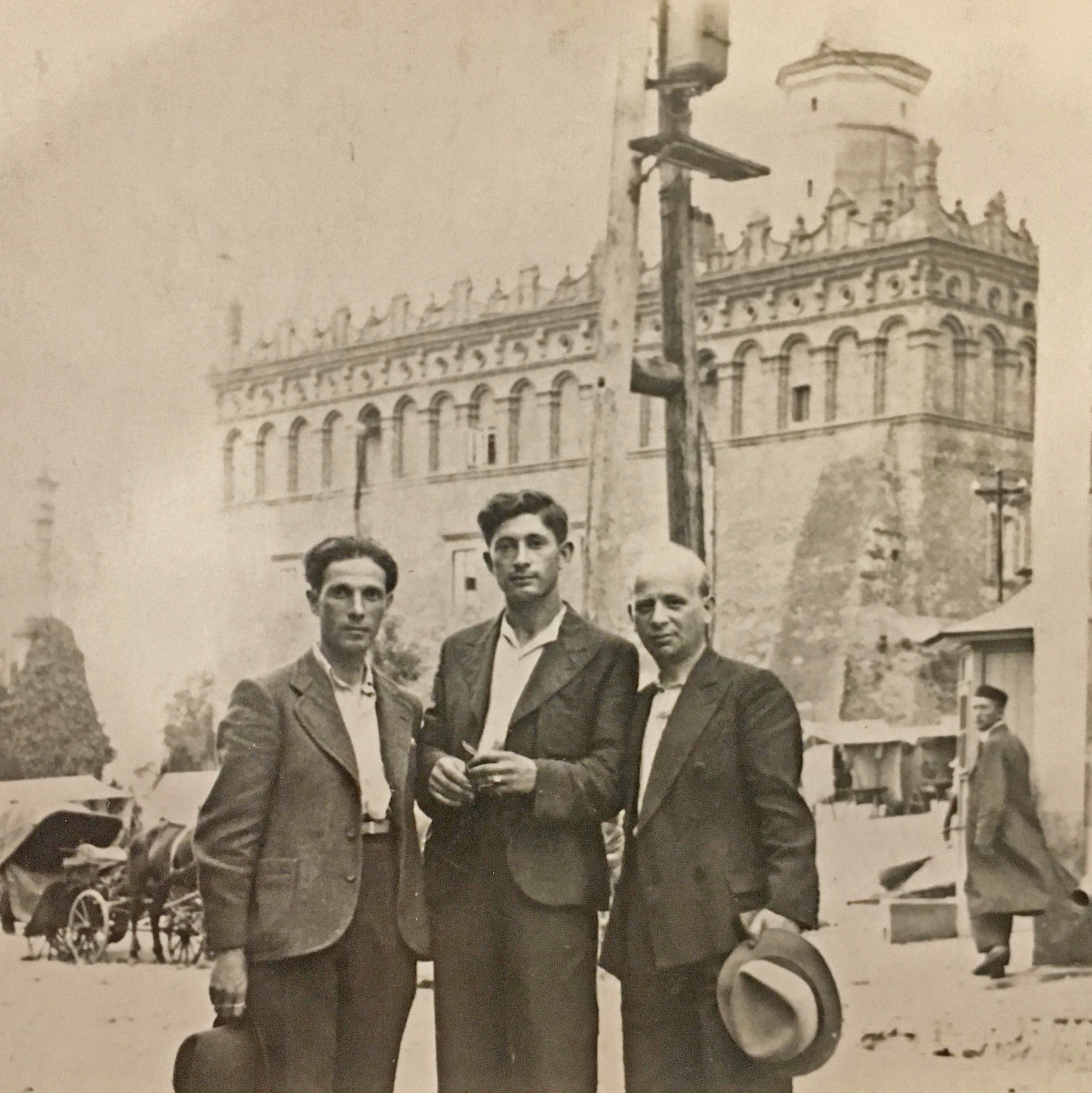


Poland, mid-late 1937
These photos were taken while Mącznik and Fenster were on their renowned, resistance art journey
to paint and to write about important synagogues of eastern Europe, many wooden, before they
were anticipated to be destroyed by the Nazis as part of the Holocaust during World War II.
~~~~~~
Left photo, in Sandomierz: Jacob Mącznik (left) and Hersh Fenster (right).
(The third man is unknown with confidence, possibly Shmuelik (of Sandomierz, see #15, below).)
~~~~~~
Center photo, only days later, in Kurów: Jacob Mącznik seated in the foreground, second from the right,
and Hersh Fenster in the back, on the left. Regarding Kurów, Fenster wrote (translated from Yiddish):
When we entered the shul, we became surprised by the magnificently carved holy ark,
by the pulpit and almemar, that we immediately set to photograph, on account of their
beauty. But we were no less enthused by Reb' Yoskeh Sofer, who was the cantor
of the shul, for his finely chiseled face, for his discreet aristocratic bearing.
(Reb' Yoskeh Sofer (the shul's Khazn) is in the middle row, on the right.)
(Left and center photos courtesy Musée d'Art et Histoire du Judaïsme (Paris), edited by the webmaster.)
~~~~~~
Right photo (edited by the webmaster) [from יזכור-בוך קאריוו = ספר יזכור, מצבת-זכרון לעיירתנו קוריב ,
Book in Memorium of Our Hometown Kurów, edited by Mosheh Grosman,
published by Irgun yots'e Koriv (see https://archive.org/details/nybc313841)
in 1955 in Tel-Aviv (image provided for the book by Leizer/Lazer Eichenrand)]:
the same scene, same day, without the people, with the Yiddish caption translated as:
The almemar in the Kurów synagogue, which was one of the oldest and most noteworthy
(photographed in the year 1937 by the Jewish Parisian artist J. Mącznik (perished)
and Hersh Fenster). Submitted by the Kurów poet L. Eichenrand (Paris).
~~~~~~
This journey of resistance art is described in detail in the chapters about
Mącznik in the books by Fenster and by Chil Aronson. Translations of the
two chapters are available in five languages by clicking Literature.
It was also described contemporaneously in several newspapers.
Images of the folio synagogues may be seen here.

1938, Paris: party at the home of Léa and Hersh Fenster
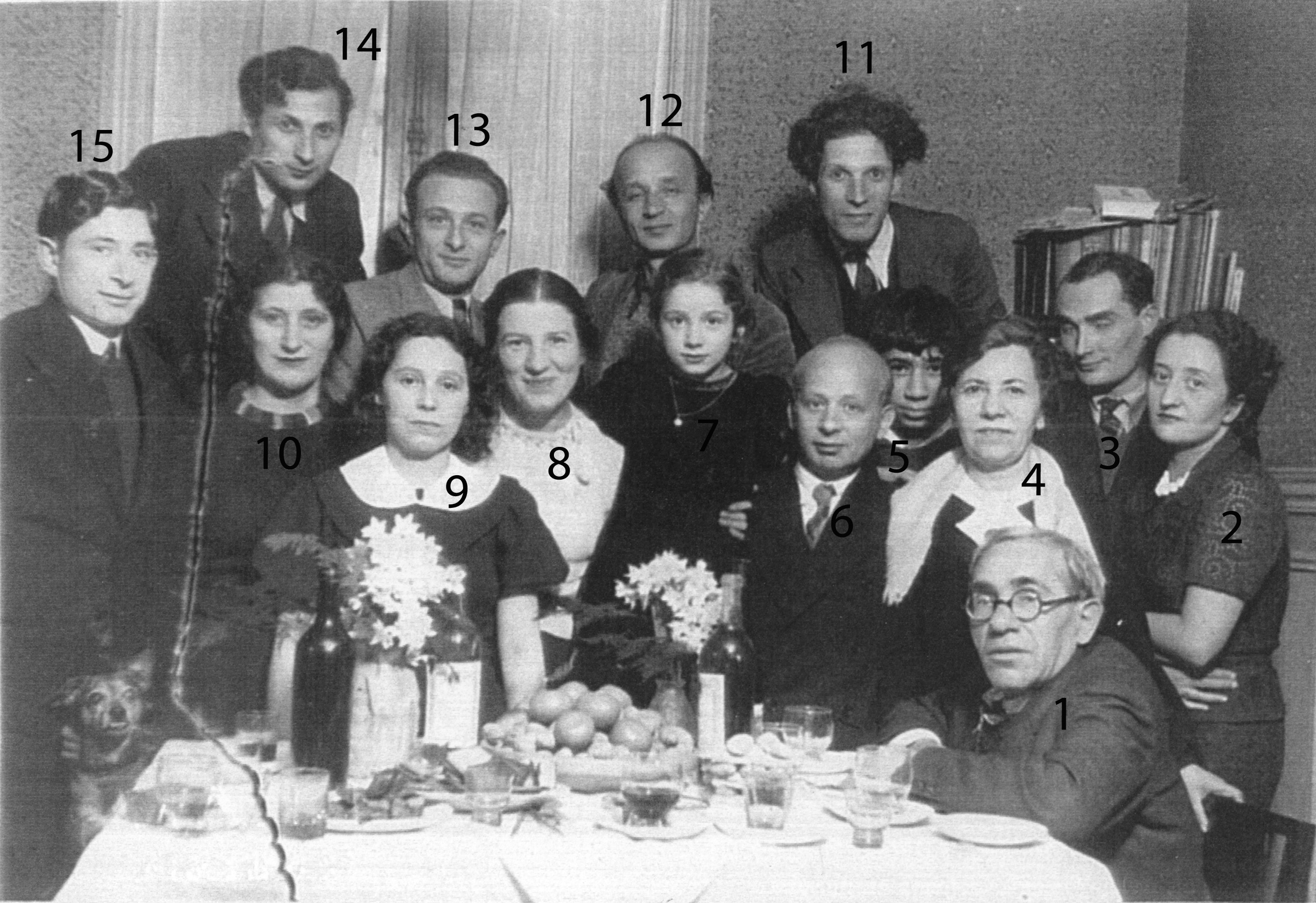 |
|
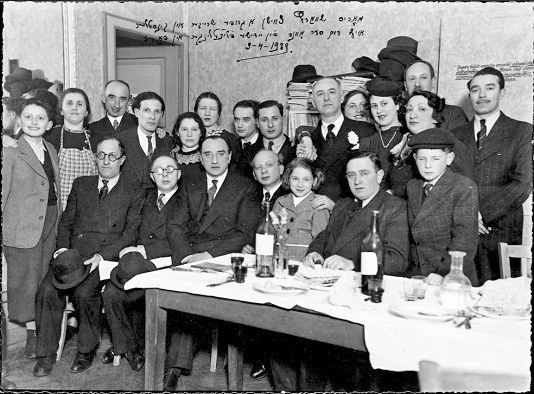
Seder
3 April 1939
Mącznik, standing, fourth from the left. Mącznik's wife Sonia/Stella to his immediate left.
Fenster's wife Léa behind Sonia/Stella. Fenster, seated, with his arm around his daugther Khayaleh.

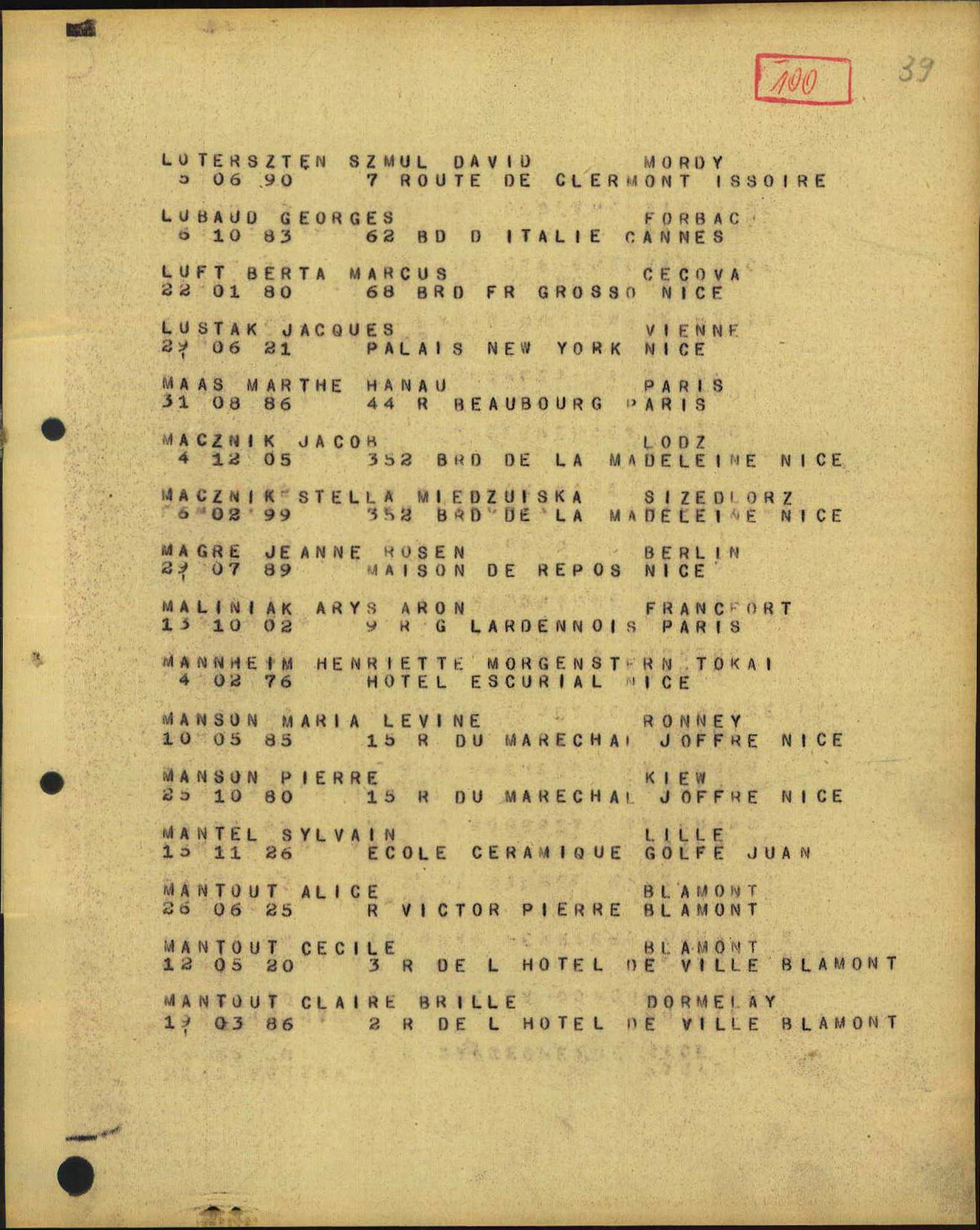
Jacob, his legal wife, and her sister were all on convoy # 61 from Drancy to Auschwitz October 28, 1943. His legal wife's name was Stella (aka Sonia), and her sister was Fanny. Despite typographical error(s) above, the two women's birth-family name was Miedzinska.
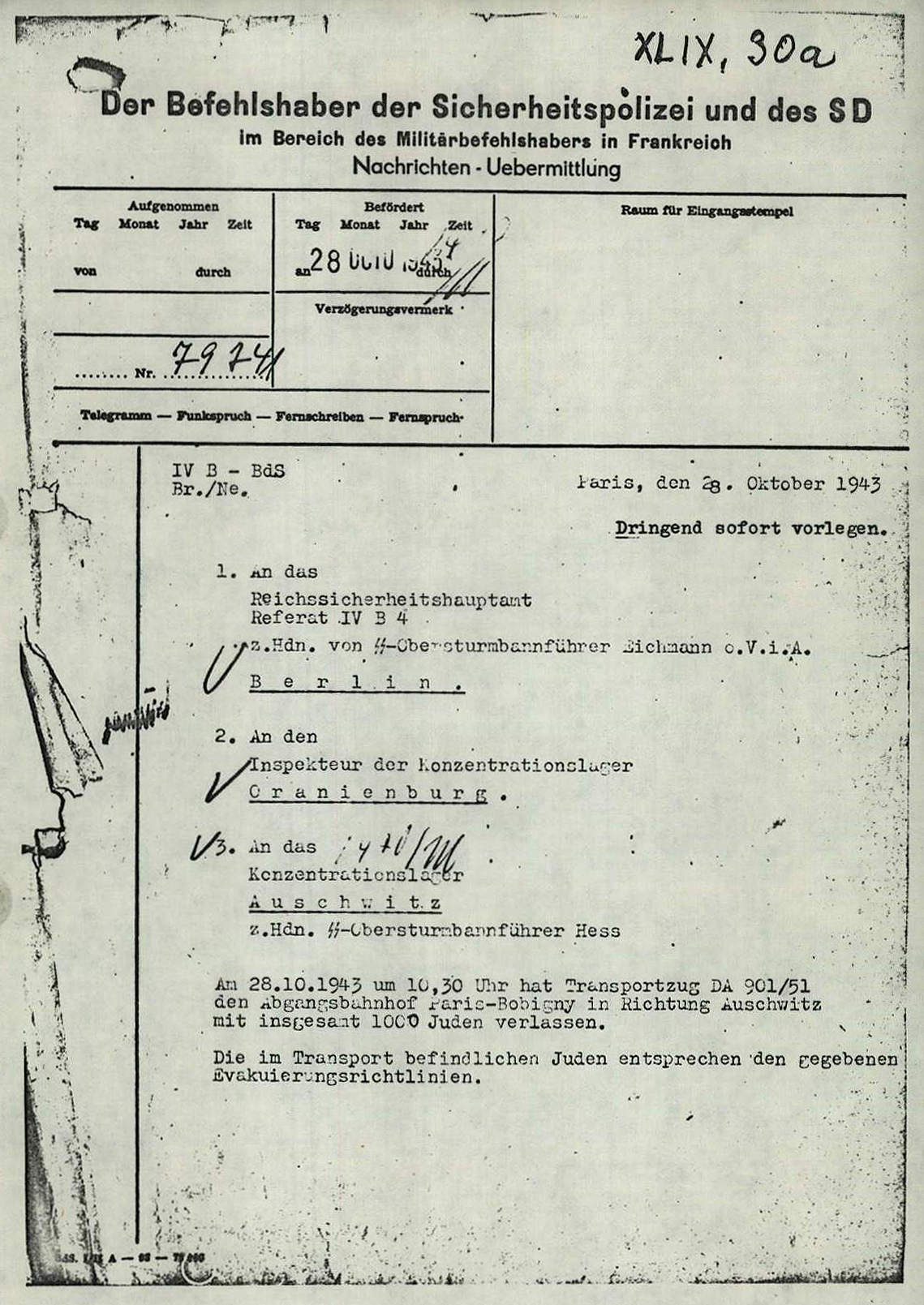

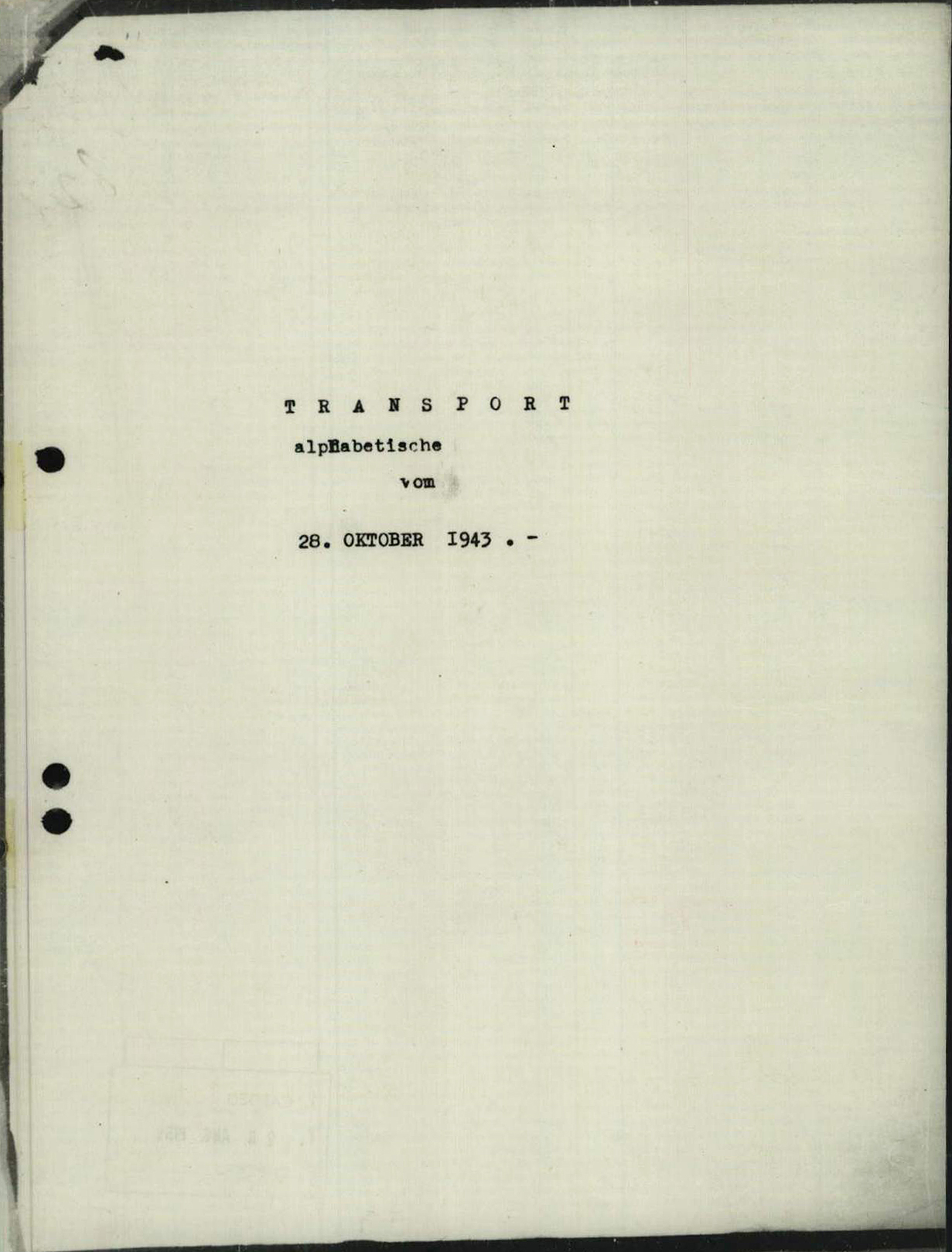

The above six images document Mącznik's deportation from France to Auschwitz. The first two documents are in French; they are from the convoy (# 61) list of 28 October 1943 from Drancy. The middle two images are copies of the actual written message/transmission from the office of the Commander of the Security Police and the SD (the latter, the Sicherheitsdienst, being the intelligence agency of the SS and of the Nazi Party); it indicated departure of the train carrying 1000 Jews from the "departure station" in Paris (Bobigny, a northeastern suburb of Paris) toward Auschwitz at 10:30 am and was sent: to SS Lieutenant Colonel (Adolf) Eichmann at the main security office in Berlin, to the inspector (located in Oranienburg) of the so-called "concentration camps," and to SS Lieutenant Colonel (Rudolf) Höss (which can also be written Hoess) as Commandant of the camp at Auschwitz. [The order identifies the latter's rank and location correctly, but the name contains a typographical error: Hess was Deputy Führer of the Nazi party until his arrest in 1941 in Scotland, but Höss/Hoess was the Commandant at Auschwitz. (They shared the same first name Rudolf.)] The second page of the order states in German the following:
"The transport is escorted by 1:20 security police (master security policeman Schramm).
"The following groceries were supplied to the transport in one railcar:
"3500 kg flour, 4500 kg potatoes, 275 kg sugar, 80 kg coffee substitute, 275 kg pasta, 250 kg margarine, 350 kg salt, 275 kg dried vegetables, 500 kg canned vegetables, 1919 kg grapes, 15 kg chocolate
"I ask that the highly valuable groceries not be used for concentration camp prisoners.
"If the exact number of 1,000 Jews is not handed over by the escort detail, I request a message from Concentration Camp Auschwitz."
[signed by SS Hauptsturmführer Brunner]
The final two documents are the cover page and the page relevant to Mącznik (and to his wife) of the transport list. Jacob Mącznik's occupation is listed as "art-painter," while Stella's might be translated as "tailor" or "dressmaker." They are identified further as # 5925 and # 5926. Stella's (Sonia's) family name at birth was Miedzinska. Her sister Fanny lived and traveled together with Jacob and Stella (Sonia) as a loving threesome. Not imaged above is the page including Fanny's listing; she is listed on another page and identified further as # 5927. These pages can be viewed online at the Arolsen Archives web site. In summary, Jacob/Jakub was born 4 December 1905; his legal wife Stella/Sonia was born February 6, 1899; and, her sister Fanny was born May 3, 1902.
[Images courtesy Laura Vento and Suzanne Brown-Fleming of the United States Holocaust Memorial Museum, hereinafter LV, SBF and USHMM, respectively; and, Arolsen Archives.]

Above an image of the actual registration form of Mącznik at Auschwitz so-called "concentration" camp (actually a mass murder camp). At the lower left hand corner, one can make out his signature, purportedly acknowledging the printed sentence above, that he has been advised that his punishment will be for document forgery if the above information is false. The form indicates much personal data (family members, address, occupation, etc.), and that his type or category of detention/imprisonment was "Protective Custody, Jew."
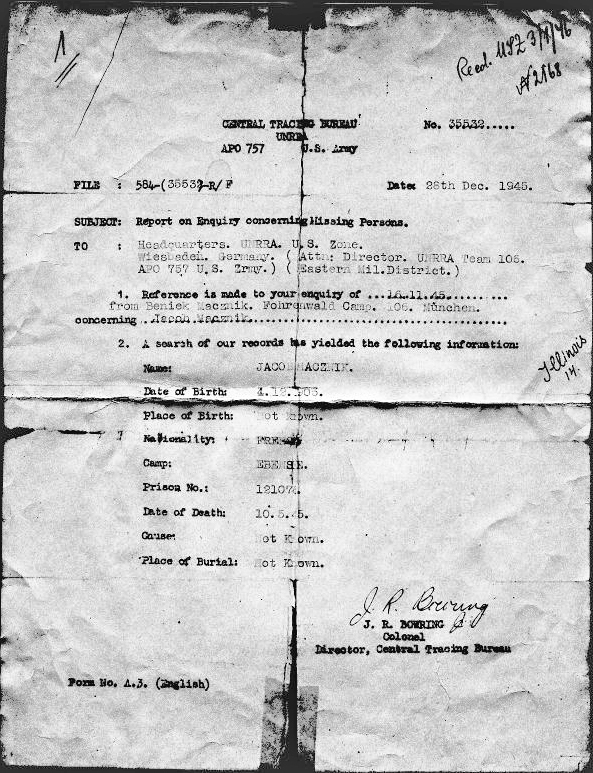
Death certificate of Mącznik, issued by Colonel Bowring of the Central
Tracing Bureau in Frankfurt 28 December 1945, at the request of Mącznik's
brother Ben/Bendet/Beniek Moncznik/Mącznik (later, Munn).
The request was made 16 November 1945.
[That same day in November, by coincidence, Lieutenant-General
Sir Frederick E. Morgan, UNRRA Chief of Operations in Germany,
suggested that the Central Tracing Bureau be moved north to Arolsen.
The next month after this certificate was issued, the move was made to Arolsen,
where Colonel Bowring remained its Director until early-mid 1947.
It became the International Tracing Service 1 January 1948.]
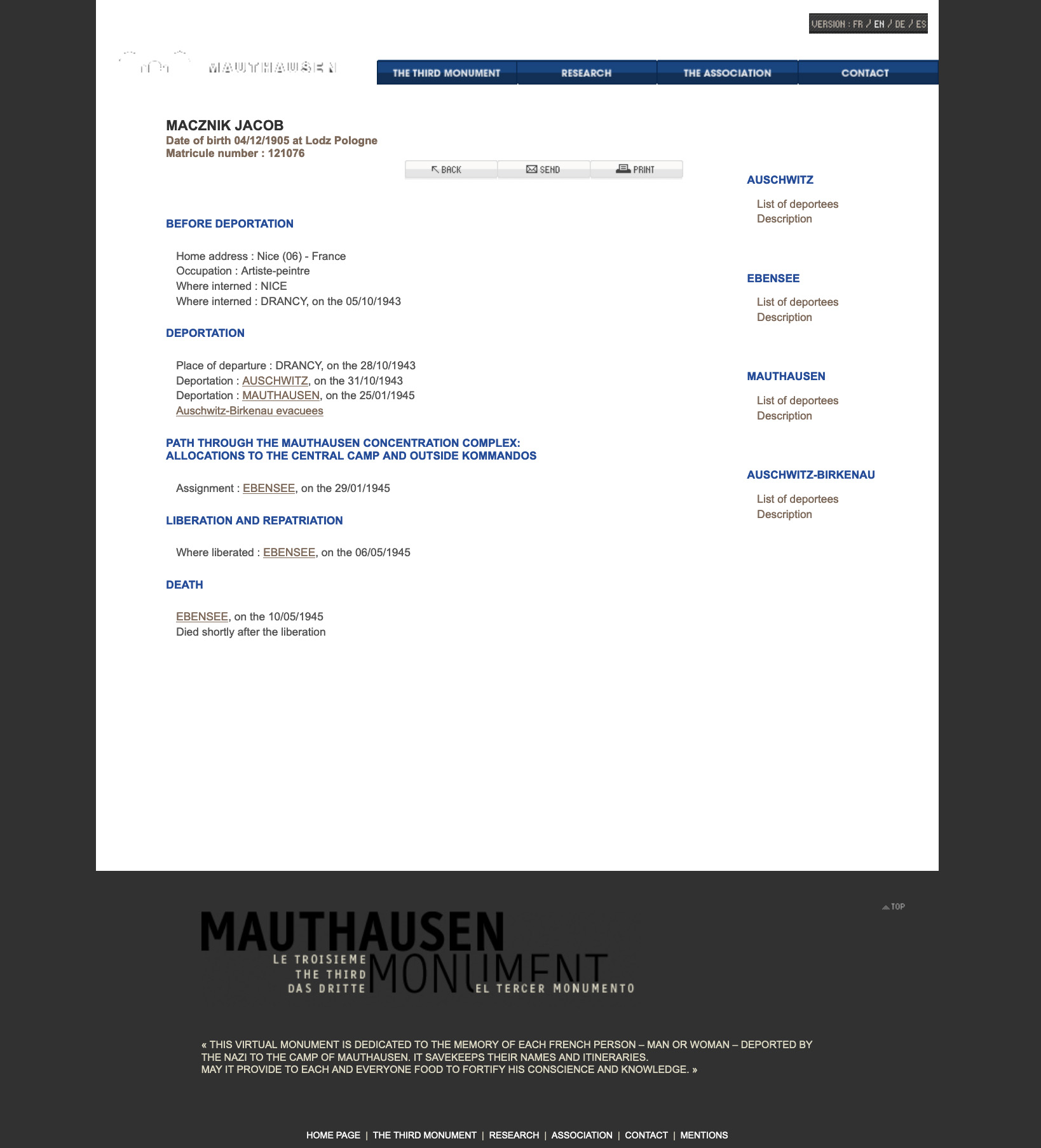
A webpage from the Mauthausen Memorial, detailing particular dates of Mącznik's deportations.
Mącznik was murdered in the Ebensee division of the Mauthausen camp, in Austria, dying the 10th of May, 1945.

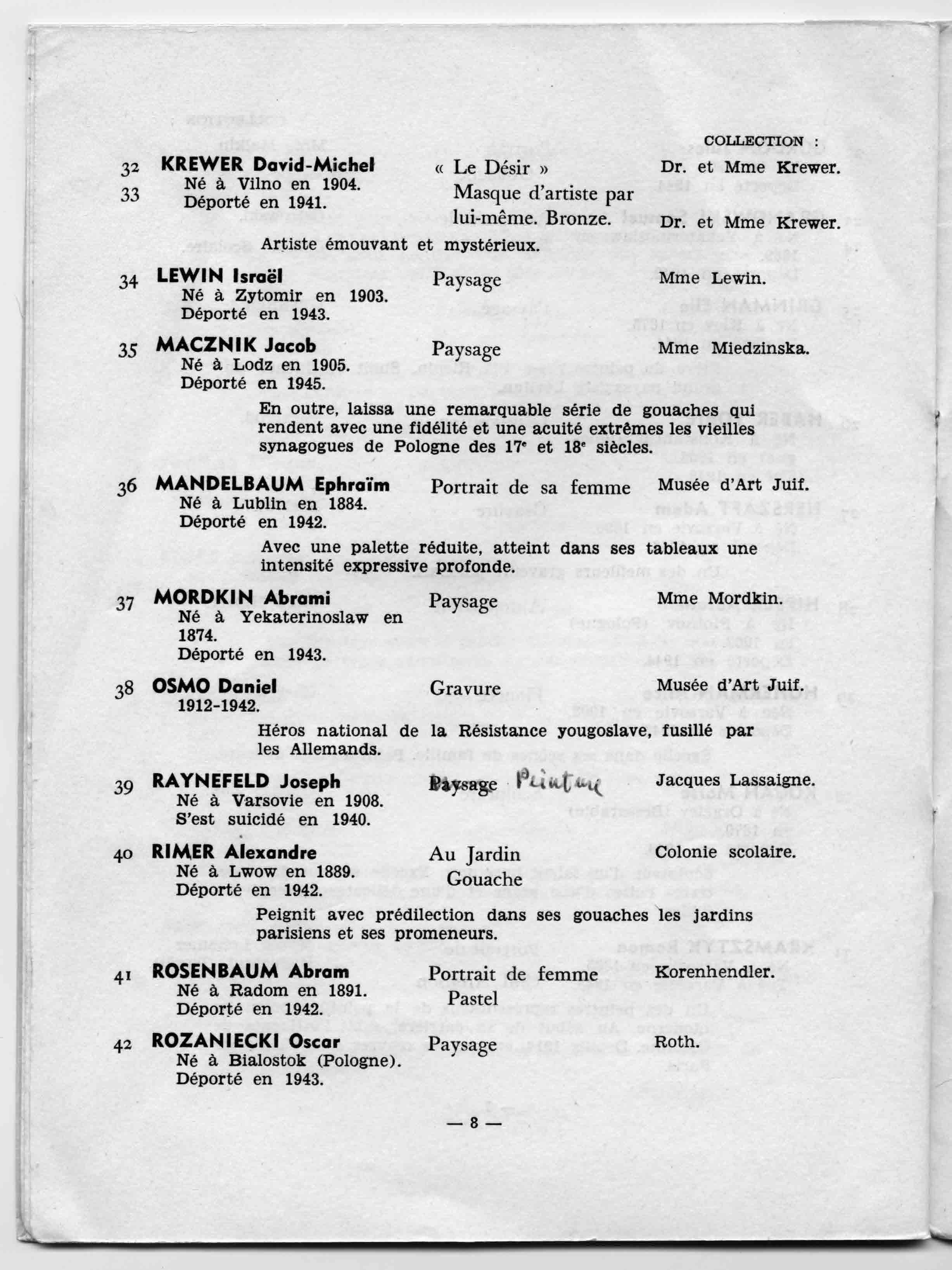
The cover and key page of an exhibition in Paris in 1955
of Jewish artists, dead/killed in deportation.
[Under Mącznik's name, the year of his deportation is incorrectly listed as 1945.]